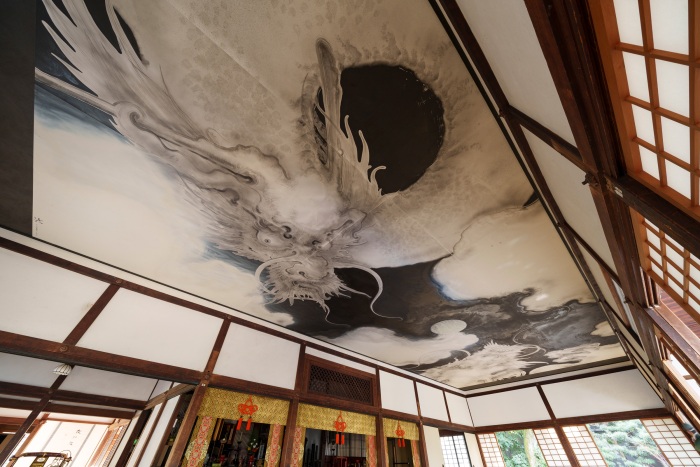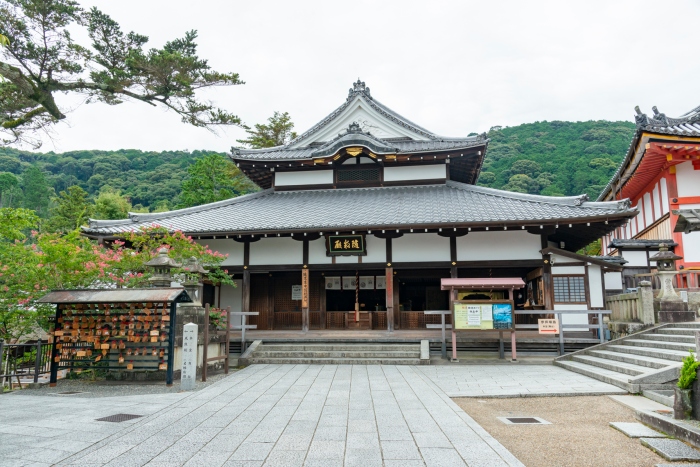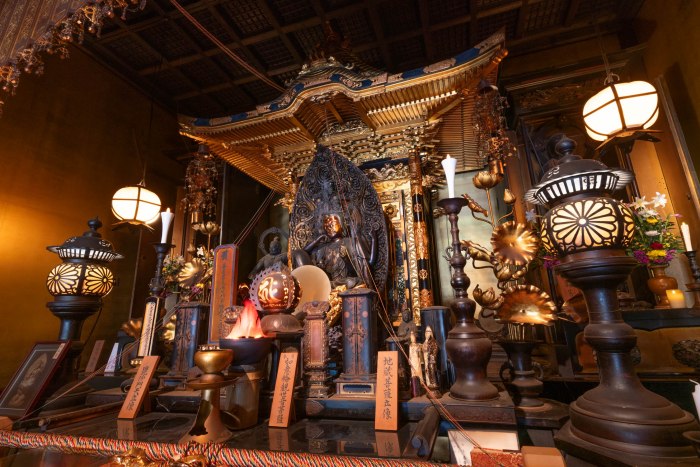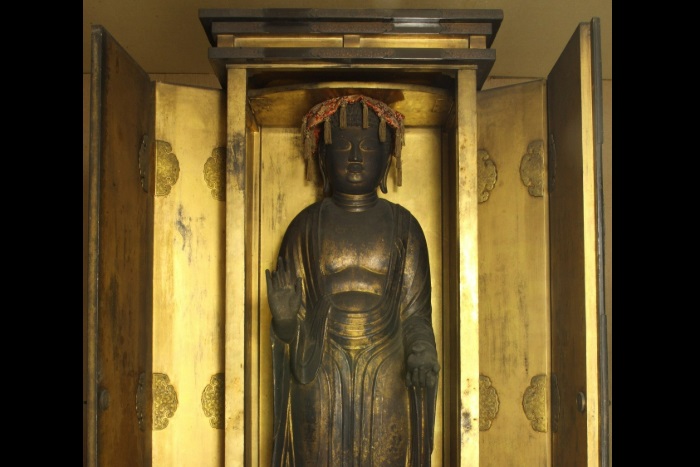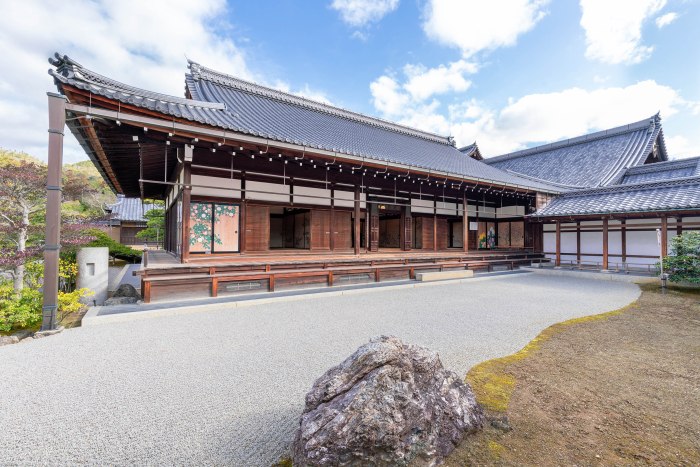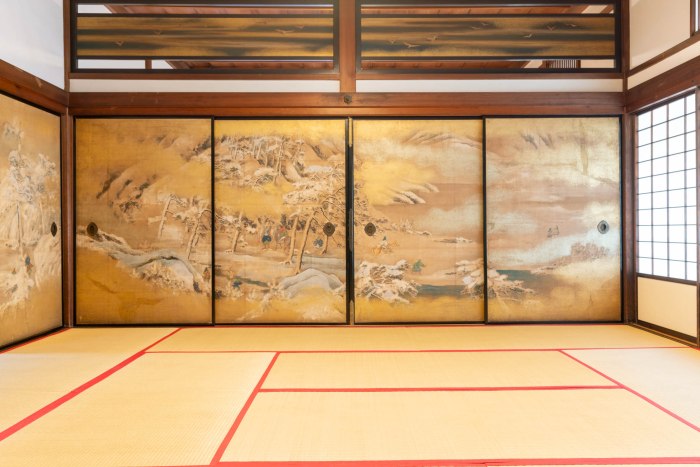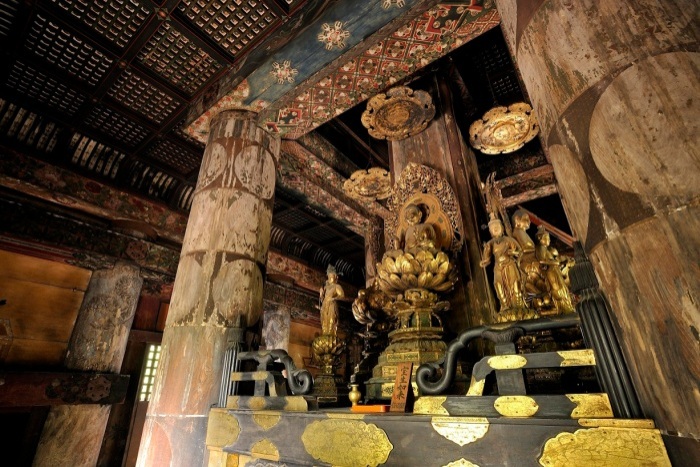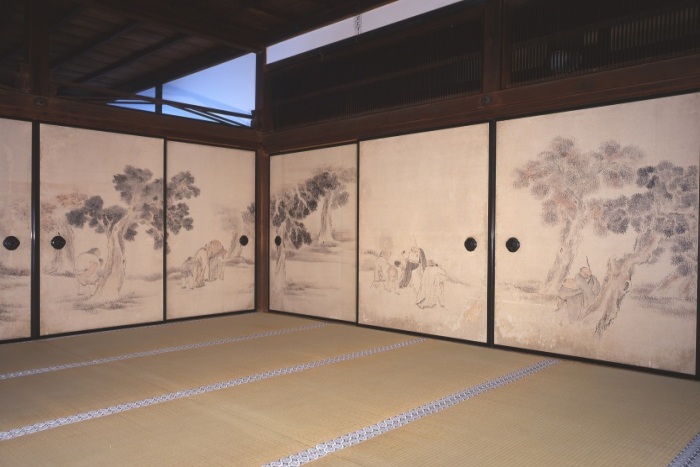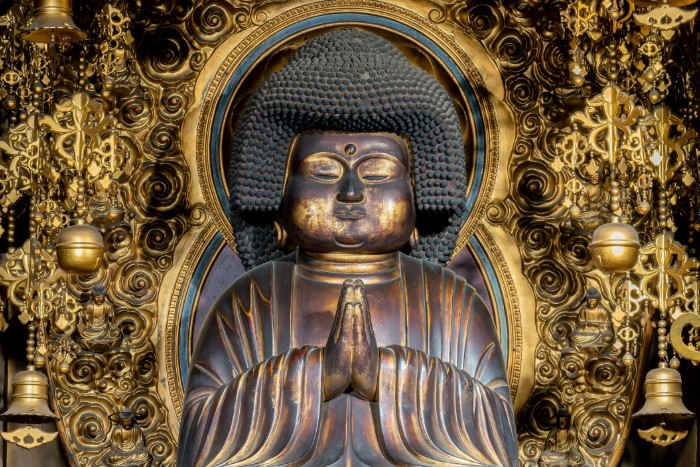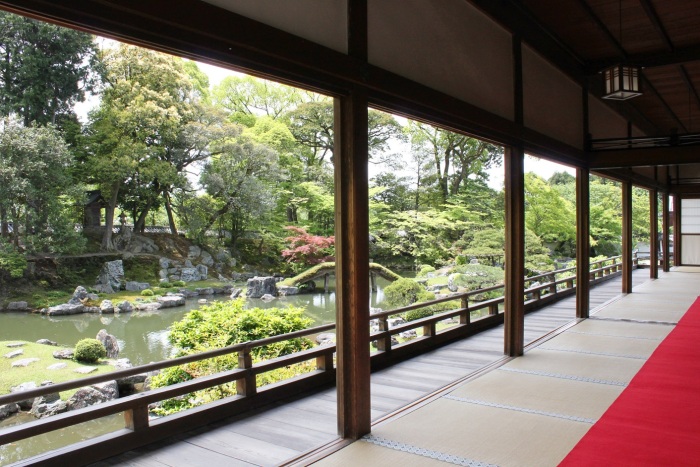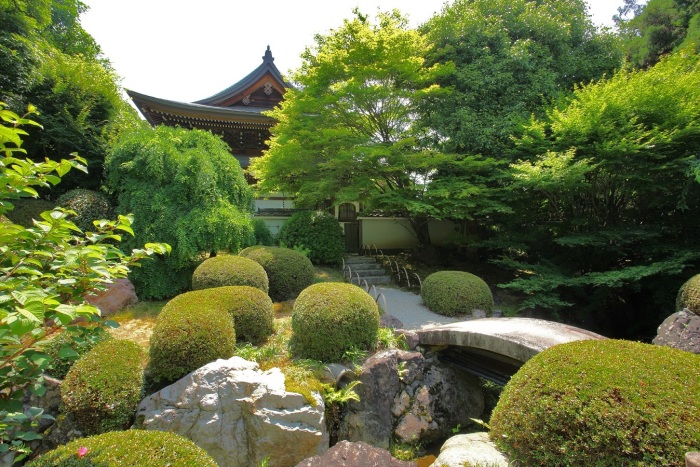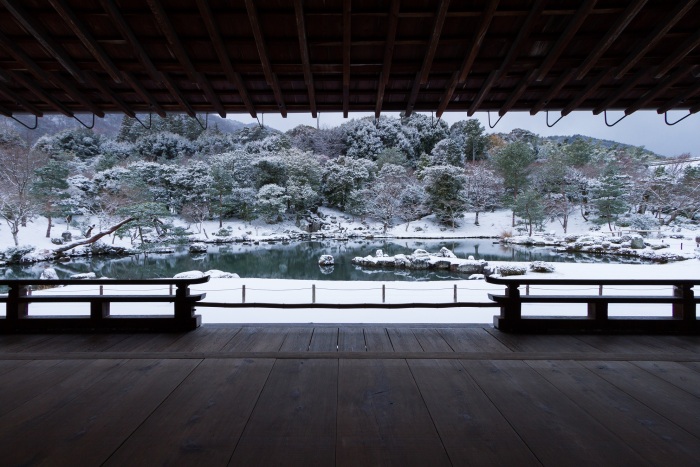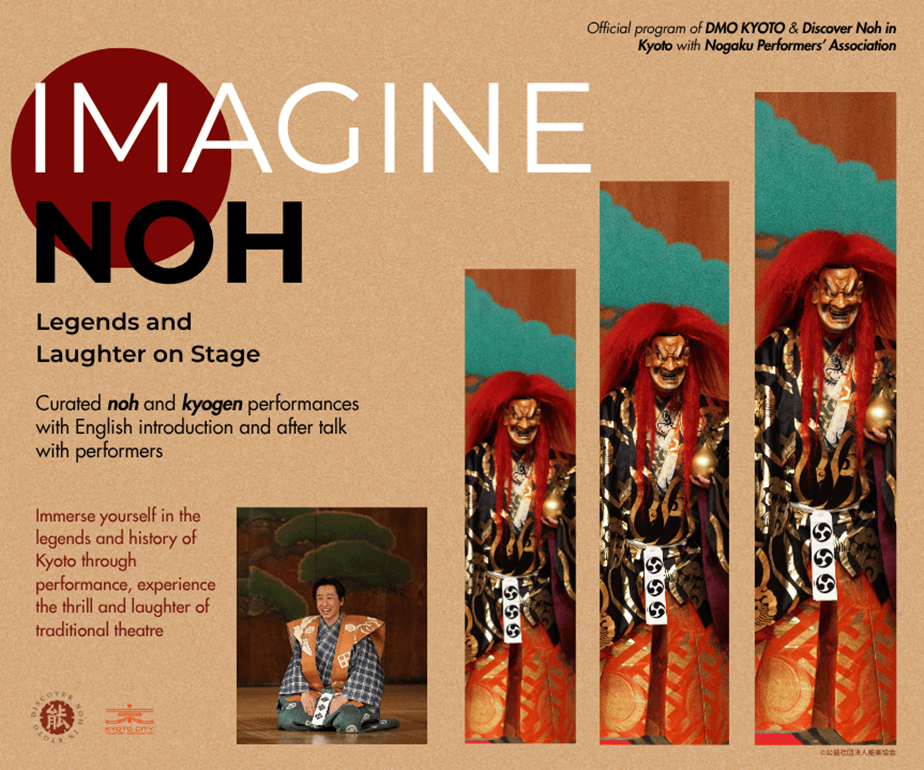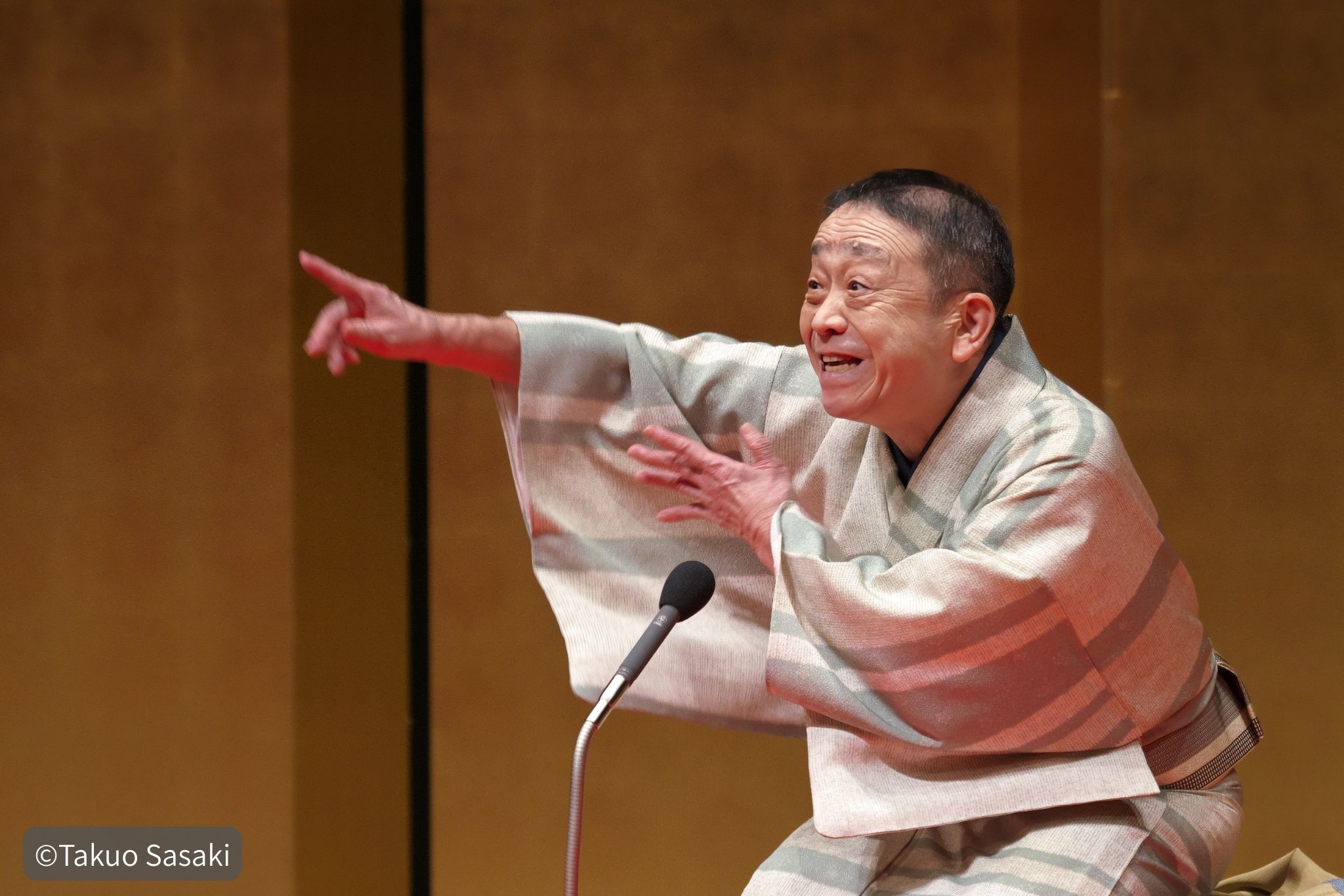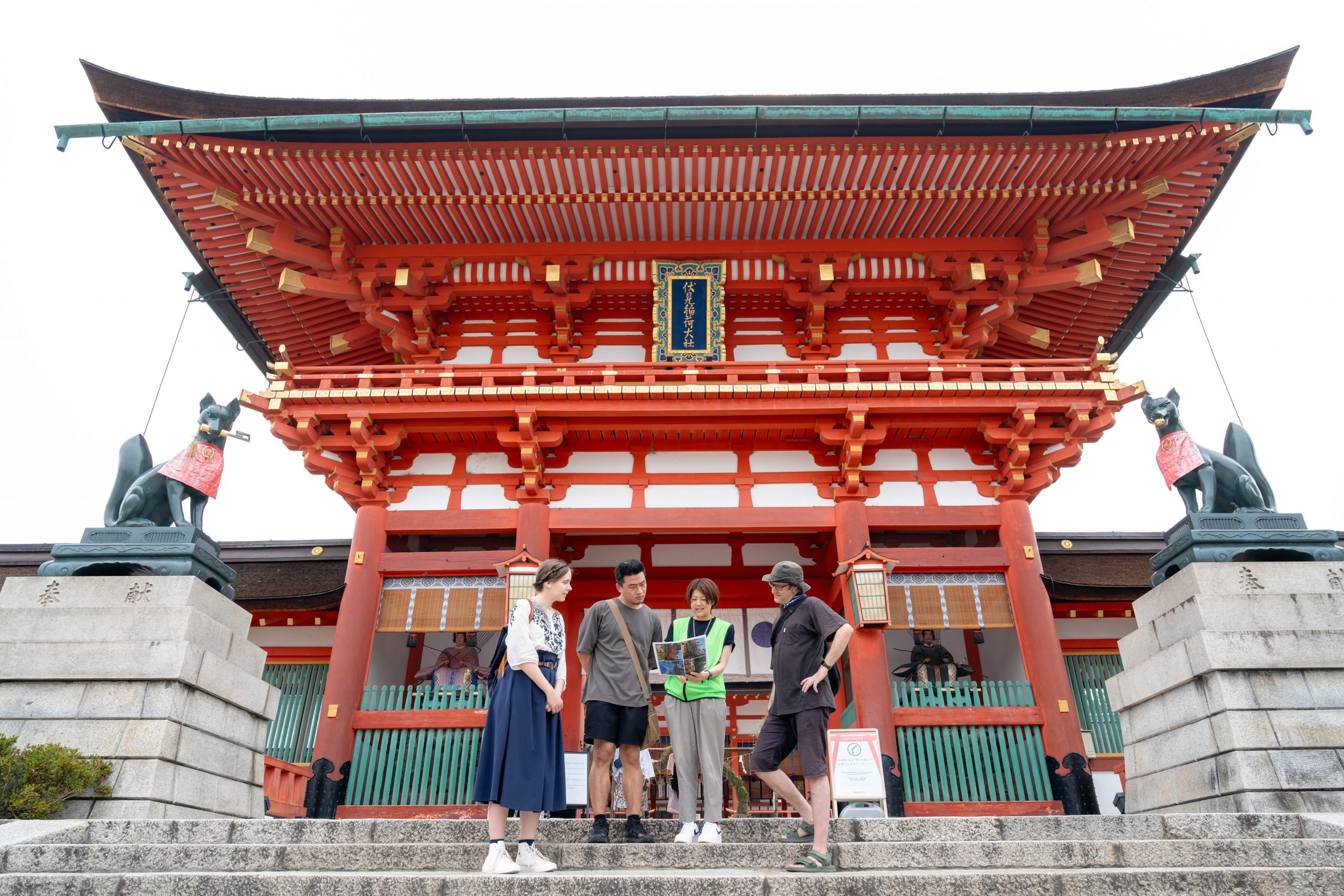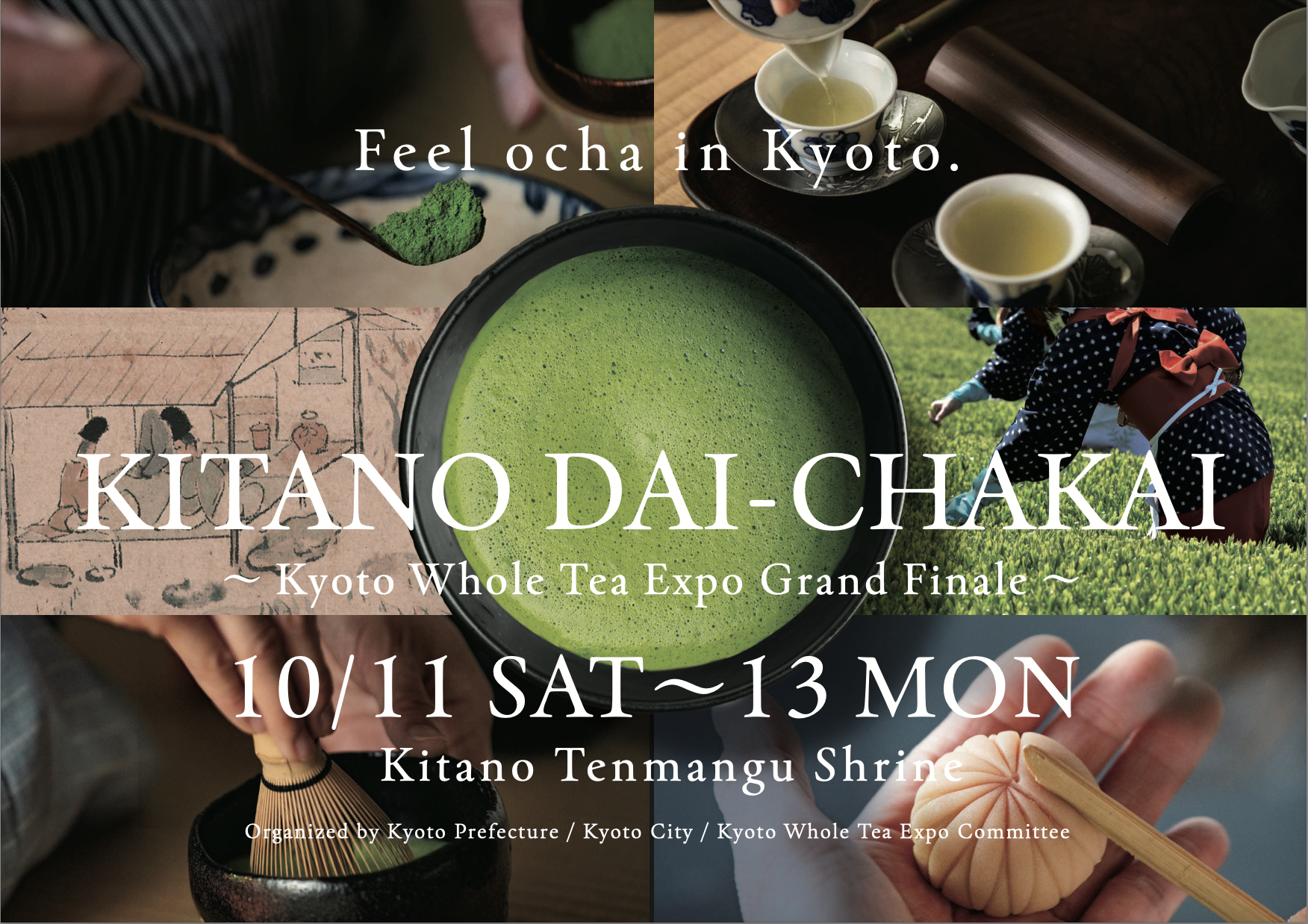The Kyoto Winter Special Openings is a program allowing visits to special sites, including temples, shrines and other historical buildings of cultural importance in Kyoto, for a limited period during the winter. The program is carried out according to different themes each year, promoting theme-based appreciation of historical and cultural assets. Although Kyoto has many heritage sites, including many National Treasures and Important Cultural Properties, only a limited portion of them is regularly shown to the public.
The 59th Kyoto Winter Special Openings, which will allow visitors view valuable cultural assets not normally shown to the public, will be carried out this winter, and its themes will be “30th anniversary of UNESCO World Heritage registration” and “20th anniversary of the revival of the Pilgrimage of Thirty-Three Sites of Kannon Worship in Kyoto.” Cultural assets of Kyoto’s World Heritage sites not normally open to the public will be shown on this special occasion commemorating the 30th anniversary of the registration of the UNESCO World Heritage Site Historic Monuments of Ancient Kyoto (1994).
The temples belonging to the Thirty-Three Sites of Kannon Worship in Kyoto, a pilgrimage course featuring Kannon, the Bodhisattva of compassion, that was revived twenty years ago, will also be highlighted. Take advantage of this special opportunity to view valuable and historic artifacts, paintings, statues, gardens, and architectural structures in Kyoto, including some that are to be featured for the first time in the Kyoto Winter Special Openings, in fifteen locations.
A portion of the admission fees will be used for the maintenance and preservation of these historical sites and their facilities, so that the cultural properties may be passed on to future generations.
Dates
January 10th (Fri) – March 18th (Tue), 2025
*Some of the places have different opening periods. Please check the sections for each place for details.
There may also be dates or times of day where public viewing is not possible, due to ceremonial events or weather conditions (typhoon, etc.). Up-to-date information will be shown on this website, so please check prior to your visit.
Special opening hours
10:00 to 16:30 (last admission 16:00)
*The hours are different for some places. Please check the sections for each place for details.
Admission Fee (per place)
・Adults ¥800
・Age 6 – 12 ¥400
*Free for children age 5 and below
*The fees are different for some places. Please check the sections for each place for details.
NOTE
During your visit to temples, shrines, etc.; we ask you to please observe the following:
- No smoking
- No drinking
- No eating
- No photography in some areas. Please follow the instructions of each place when you wish to take photos. Some places may not allow photography of areas or objects related to religious worship. We ask for your understanding.
- Please unshoulder your backpack/shoulder bag or carry it in front of you in order to protect cultural properties. If possible, please check in large pieces of baggage. Please refrain from visiting barefoot.
- Please do not touch any cultural property (pictures on partitions, Buddhist statues, etc.).
*Some temples may be closed for Buddhist services without notice.
*On-site guidance is available in Japanese only. English information will be provided in print or digital text.
Details
1. Kennin-ji Temple, Seirai-in Temple
2. Kiyomizu-dera Temple, Zuigu-dō
3. Chōhō-ji Temple (Rokkaku-dō)
4. Byōdō-ji Temple (Inaba-dō)
5. Jizō-in Temple (Tsubaki-dera)
6. Rokuon-ji (Kinkaku-ji) Temple, Main Hall
7. Ryōan-ji Temple, Butsuden (Buddha Hall) and West Garden
8. Ninna-ji Temple, Kyōzō (Sutra Treasure House) and Five-Story Pagoda
9. Higashihongan-ji Temple, Miya-goten and Ōka-tei
10. Tō-ji Temple, Five-Story Pagoda
11. Daigo-ji Temple, Sanbō-in Temple
12. Jisyo-ji (Ginkaku-ji) Temple, Hondo and Roseitei
13. Tenryū-ji Temple, Shōun-kaku and Kan’u-tei
1. Kennin-ji Temple, Seirai-in Temple
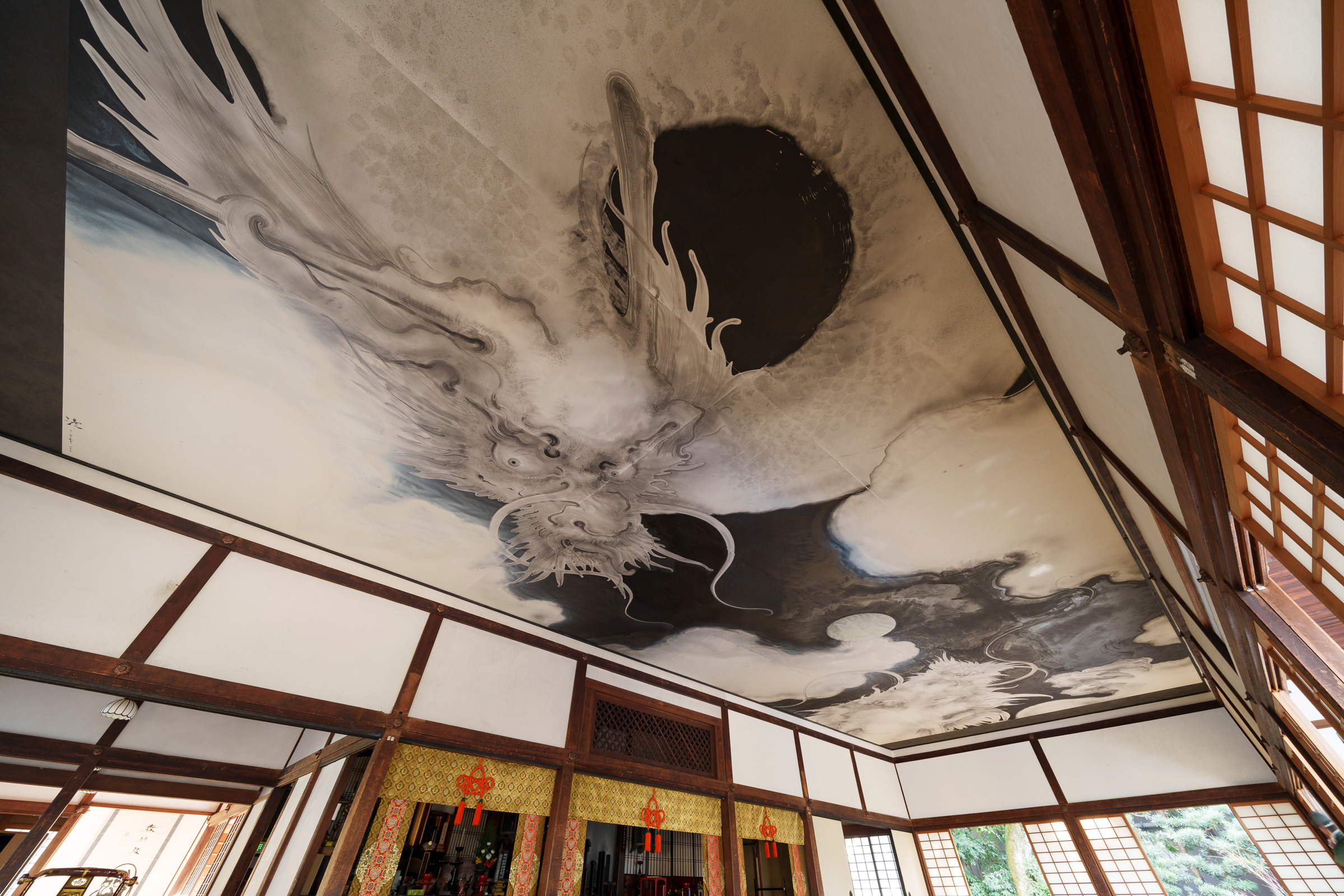
Seirai-in Temple is a sub-temple of Kennin-ji Temple that was built by Lanxi Daolong (Rankei Dōryū), a priest from China who spread Zen Buddhism in Japan in the thirteenth century. The main hall has a dynamic ceiling painting of a white dragon. In front of the main hall spreads the Gabijōun-no-Niwa, which is a Zen garden with beautiful moss and large rocks that were brought from Mount Emei in China. The Nehan-zu, depicting the Buddha dying and entering Nirvana, that was painted in the fall of 2024 will also be made open to the public.
| Dates | January 10th (Fri) to March 18th (Tue), 2025 *Closed to the public from March 1st (Sat) to March 3rd (Mon), 2025 |
| Hours | 10:00 – 16:30 (Admission until 16:00) |
| Admission Fee | Adults ¥800・Age 6-12 ¥400 |
| Access | ● From Kyoto Station, take City Bus No. 206 and get off at Higashiyama Yasui. 5-minute walk from the bus stop. ● From the JR Nara Line’s Tofuku-ji Station, take the Keihan Line to Gion-Shijo Station. 10-minute walk from the station. |
2. Kiyomizu-dera Temple, Zuigu-dō
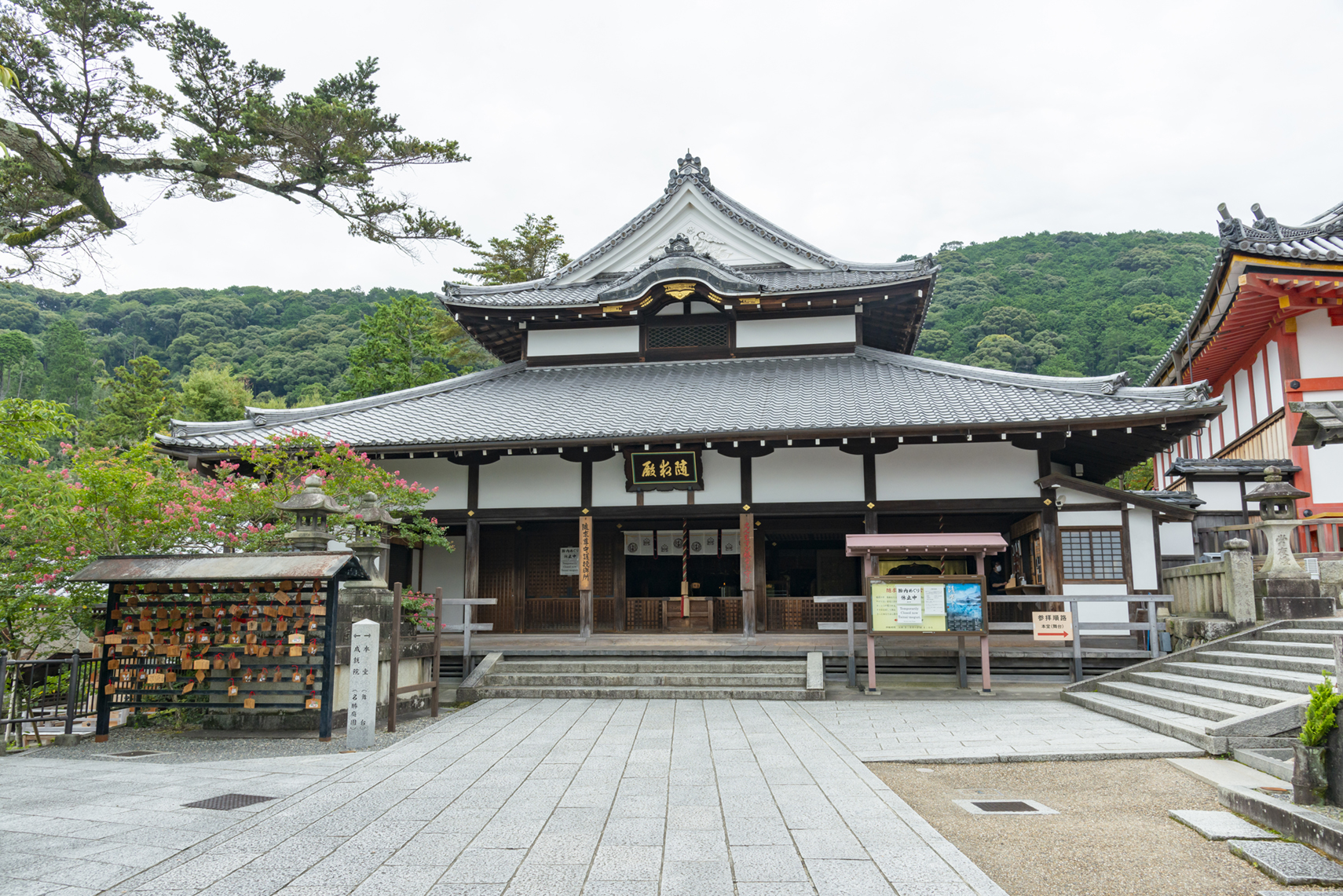
Photo courtesy of Kiyomizu-dera Temple
World Heritage Site
Kiyomizu-dera Temple is especially famous for its Main Hall (National Treasure), also known as the Stage of Kiyomizu. The Seated Daizuigu Bodhisattva, the principal image of Zuigu-dō Hall, was made open to public for the first time in 222 years in 2018 and will be for the second time during this Special Openings period. This beautiful Buddhist statue with eight arms and an aureola inscribed with Sanskrit letters was created around the beginning of the eighteenth century. Visitors may also do what is called “tainai-meguri,” which is to walk in a dark space beneath the floor of Zuigu-dō, which symbolizes the Daizuigu Bodhisattva’s womb, while touching prayer beads.
| Dates | January 10th (Fri) to March 18th (Tue), 2025 |
| Hours | 9:00 – 16:30 (Admission until 16:00) |
| Fee | Adults ¥500 ・Age 6-15 ¥300 |
| Access | • From the JR Nara Line’s Tofuku-ji Station, take the Keihan Line to Kiyomizu-Gojo Station. 25-minute walk from the station. • From Kyoto Station, take City Bus No. 86 or No. 206 and get off at Gojo-zaka. 12-minute walk from the bus stop |
3. Chōhō-ji Temple (Rokkaku-dō)
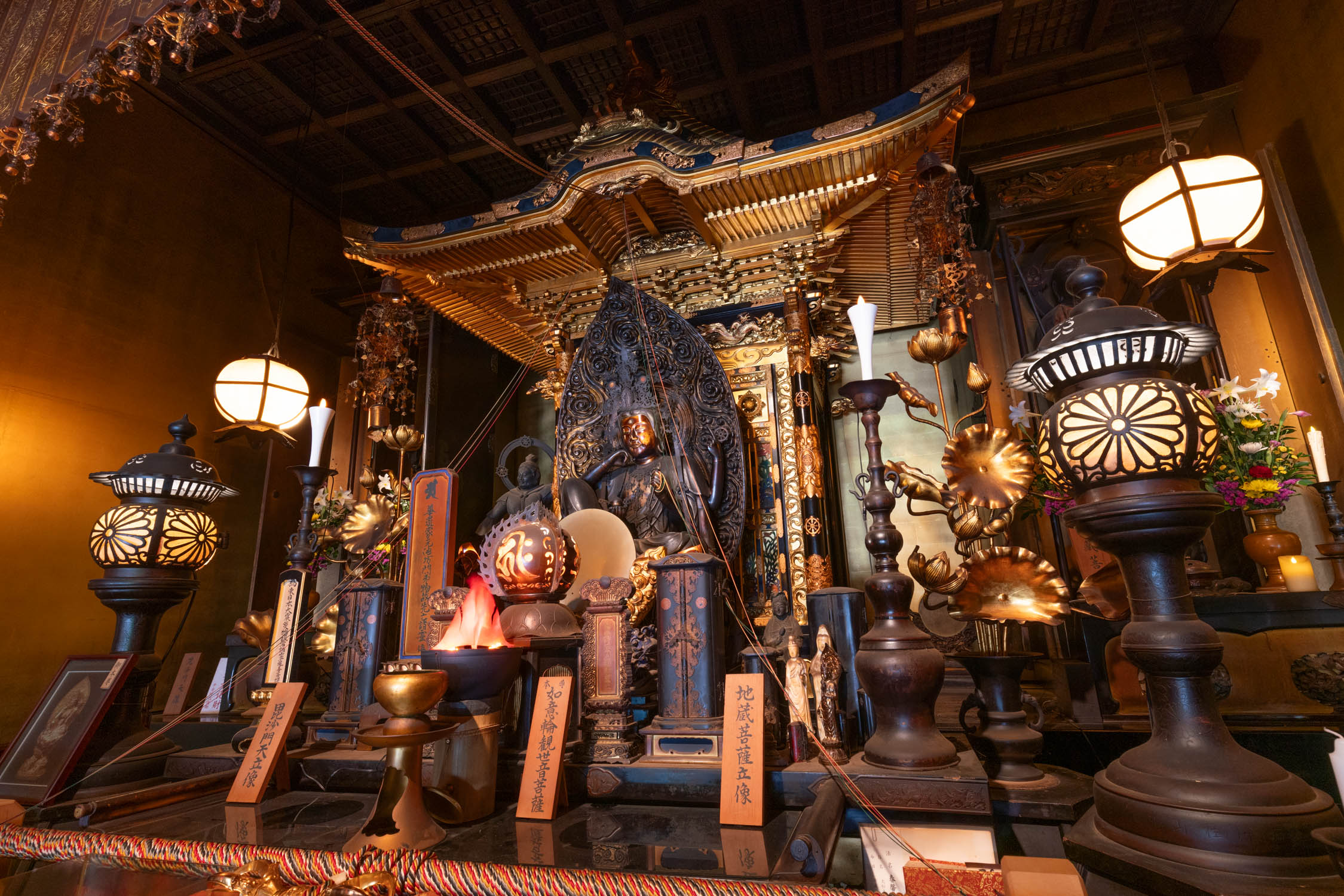
One of the Thirty-Three Sites of Kannon Worship in Kyoto
Chōhō-ji Temple is a historic temple founded in the sixth century and is often referred to as “Rokkaku-dō” (“hexagon hall”) for its hexagonal shape when viewed from above. During the Kyoto Winter Special Openings, visitors may enter its Main Hall, which is normally closed to the public. Although the temple’s principal image inside the zushi case in the center of the hall is a hibutsu(an image never shown to the public), visitors may still view a proxy image standing in front of it, as well as the Standing Bishamonten (Vaishravana) Statue (Important Cultural Property) and the Standing Jizō (Ksitigarbha Bodhisattva) Statue. The temple is where ikebana flower arrangement originated, and it is closely associated with the Ikenobo School of Ikebana. During the Kyoto Winter special openings, visitors may view treasures of Chōhō-ji in the Ikebana Museum located next to the temple.
| Dates | January 10th (Fri) to March 18th (Tue), 2025 *Closed to the public on March 15th (Sat), 2025 |
| Hours | 10:00 – 16:30 (Admission until 16:00) |
| Admission Fee | Adults ¥800 ・Age 6-12 ¥400 |
| Access | From Kyoto Station, take the City Subway Karasuma Line to Karasuma-Oike Station and exit from Exit No. 5. 3-minute walk from the station. Alternatively, get off at Shijo Station and exit from Exit No. 21. 5-minute walk from the station. |
4. Byōdō-ji Temple (Inaba-dō)
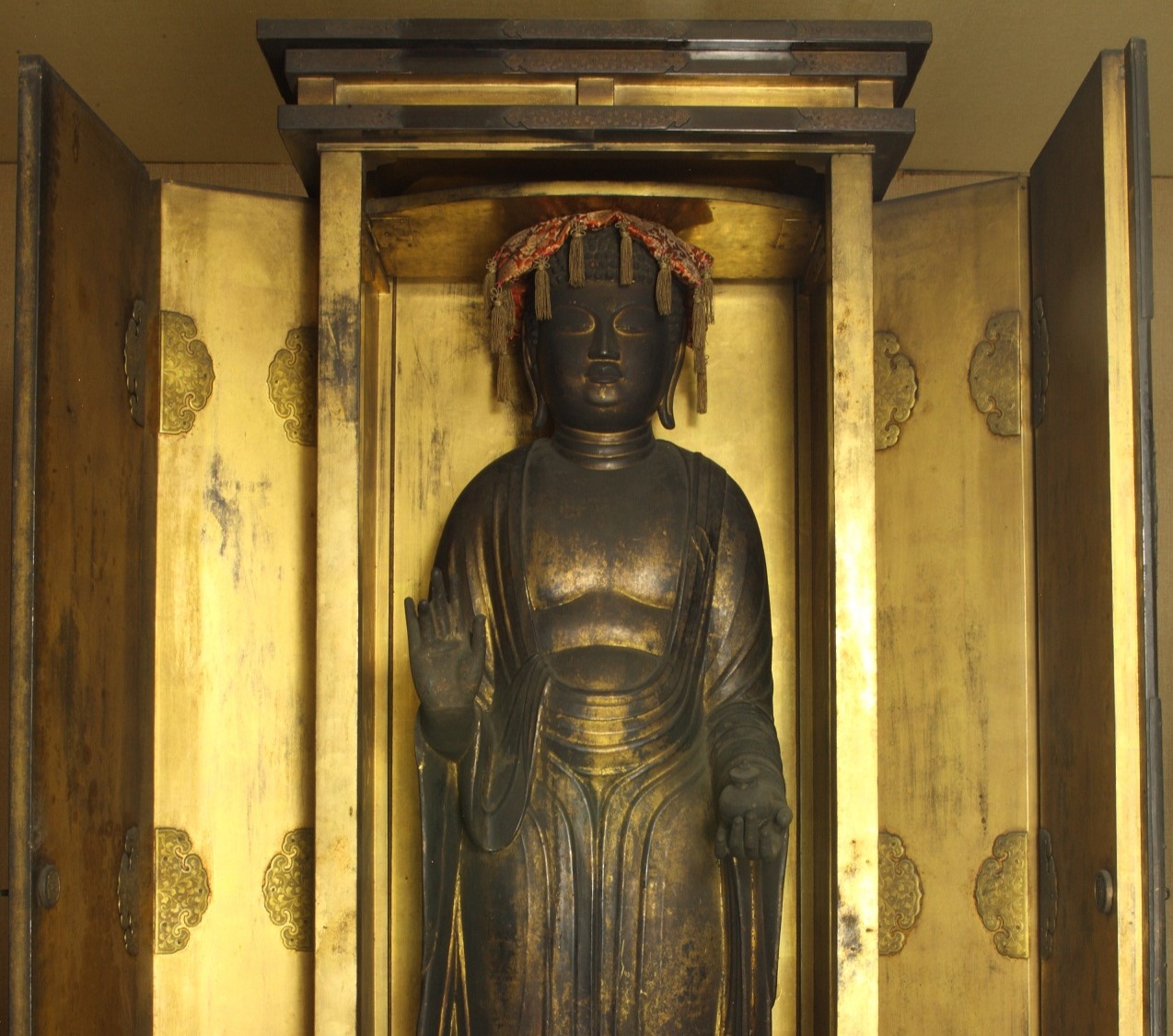
One of the Thirty-Three Sites of Kannon Worship in Kyoto
Byōdō-ji Temple was built in the ninth century. It has a long and distinguished history as an important place of worship for emperors as well as the commoners. Its unique principal image of the Healing Buddha, the Yakushi Nyorai statue wearing a hood-like headwear, will be made open to public during the Kyoto Winter Special Openings. The temple also has many other Buddhist statues including two Kannon Bodhisattva statues side-by-side and an Amida Nyorai (Amitabha).
Their “Cat Amulets,” which are cat-motif good luck charms, have been especially popular in the recent years.
| Dates | January 10th (Fri) to March 18th (Tue), 2025 |
| Hours | 10:00 – 16:30 (Admission until 16:00) |
| Admission Fee | Adults ¥800 ・Age 6-12 ¥400 |
| Access | • From Kyoto Station, take the City Subway Karasuma Line to Shijo Station and exit from Exit No. 5. 3-minute walk from the station. |
5. Jizō-in Temple (Tsubaki-dera)
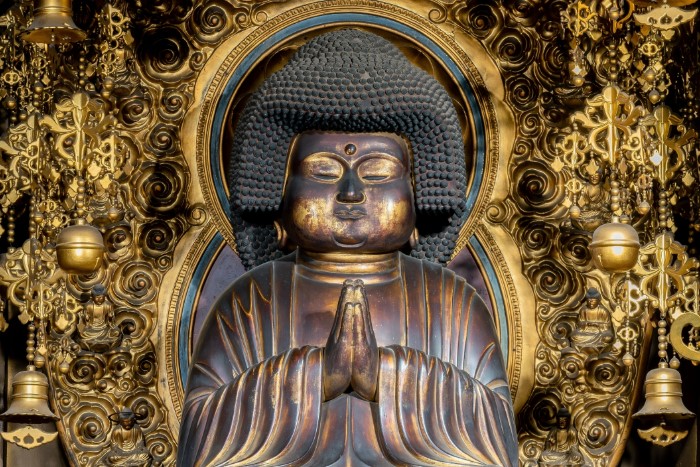
One of the Thirty-Three Sites of Kannon Worship in Kyoto
Jizō-in Temple is to have been founded in the eighth century and is also known as the “Tsubaki-dera,” or “Camellia Temple,” after the large camellia tree that grows in front of its Main Hall. On this single tree bloom flowers in a variety of colors, ranging from red to white and pink.
In the Main Hall, you can view the Gokōshiyui Amida Nyorai statue, which, unlike most other Amida Nyorai (Amitabha) statues, has a round, voluminous hairstyle that looks almost like an “Afro” hairstyle.
| Dates | January 10th (Fri) to March 18th (Tue), 2025 |
| Hours | 10:00 – 16:30 (Admission until 16:00) |
| Admission Fee | Adults ¥800 ・Age 6-12 ¥400 |
| Access | From Kyoto Station, take City Bus No. 26, No. 50, or No. 205 and get off at Kitano-Hakubaicho. 3-minute walk from the bus stop. |
6. Rokuon-ji (Kinkaku-ji) Temple, Main Hall
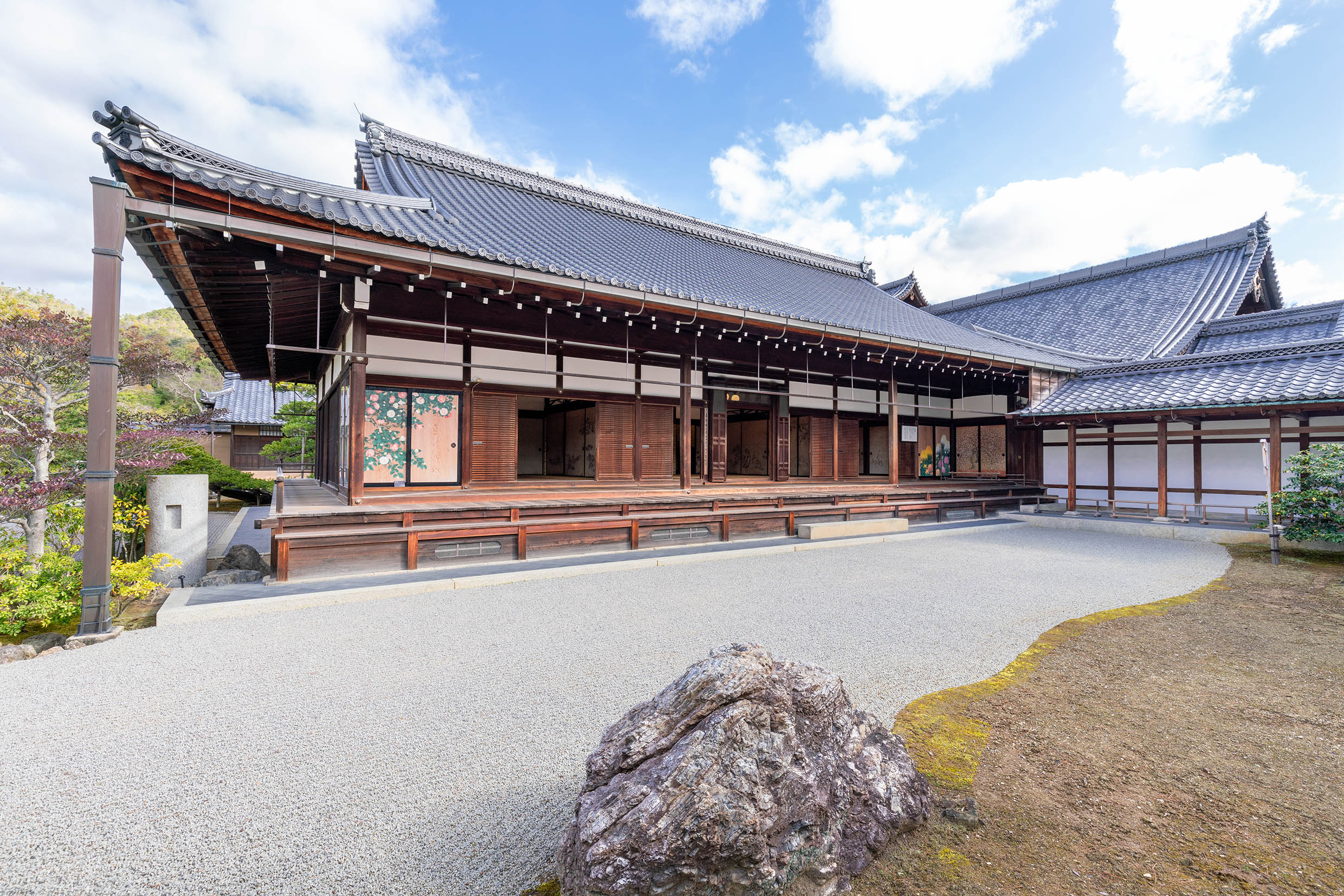
Copyright: Rokuon-ji Temple Storehouse (photographed by Akira Shibata)
World Heritage Site
Built around the end of the fourteenth century, Rokuon-ji Temple is a Zen temple that started out as a mountain villa belonging to Ashikaga Yoshimitsu (1358-1508), the third shogun of the Muromachi Shogunate. Its shiny, golden Shariden structure is well known by the name “Kinkaku,” or “the Golden Pavilion.” The Main Hall of Rokuonji will specially be made open to the public during the Kyoto Winter Special Openings. Some of its highlights are the paintings on the sliding doors by Kano Geki and the paintings on the cedar doors created by currently active Japanese painting artists Tatsuya Ishiodori and Rieko Morita.
In addition, in the garden grows a pine tree that is trained in the form of a sailing ship, said to have originally been a bonsai planted by Yoshimitsu.
| Dates | February 8th (Sat) to March 18th (Tue), 2025 |
| Hours | 10:00 – 16:30 (Admission until 16:00) |
| Admission Fee | Adults ¥800 ・Age 6-12 ¥400 |
| Access | • From Kyoto Station, take the City Subway Karasuma Line to Kitaoji Station and take City Bus No. 204 or No. 205 and get off at Kinkakuji-michi. 5-minute walk from the bus stop. • From Kyoto Station or from the JR Sagano Line’s Enmachi Station, take City Bus No. 205 and get off at Kinkakuji-michi. 5-minute walk from the bus stop. |
7. Ryōan-ji Temple, Butsuden (Buddha Hall) and West Garden
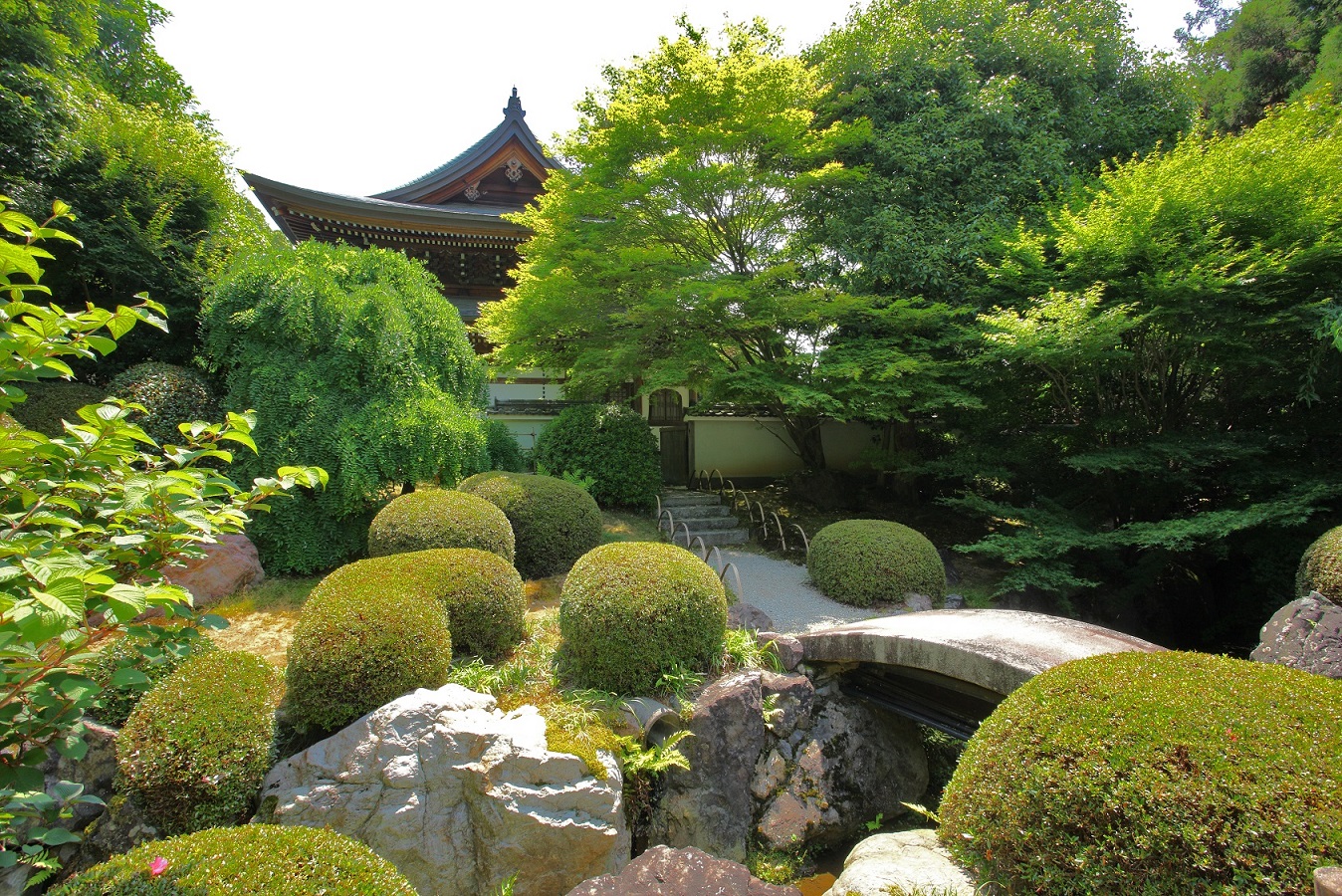
World Heritage Site
Ryōan-ji Temple is world-famous for its rock garden composed of fifteen rocks placed on a sea of white gravel. Its Butsuden (Buddhist Image Hall), which will be specially made open to public, houses a statue of the Buddha (Gautama), the temple’s main image, in the fragrant smell of hinoki cypress and a dragon painting in ink and gold on its ceiling. The garden spreading on the west side of the Butsuden has walkways for strolling and is a reproduction of a Muromachi-period (1336-1573) Japanese garden.
The Unryū-zu, painted by former prime minister Morihiro Hosokawa (1938-) on the sliding doors, will also be made open to the public.
*From March 10th (Mon) to March 18th (Tue) the special exhibition will change to present the “Zourokuan” teahouse and the “Dragon Head and Dragon Tail” painting.
| Dates | January 10th (Fri) to March 18th (Tue), 2025 |
| Hours | 10:00 – 16:30 (Admission until 16:00) *Please get past the general admission reception by 15:45 |
| Admission Fee | Adults ¥400 ・Age 6-12 ¥200 *General admission fees (Adults¥600 ・Age 16-18 ¥500・Age 6-15 ¥300) will be required in addition to the above. |
| Access | • From Kyoto Station or from the JR Sagano Line’s Enmachi Station, take the JR Bus (headed to Toganoo and Shuzan) and get off at Ryoanji-mae. 2-minute walk from the bus stop. • From Kyoto Station, take City Bus No. 50 and get off at Ritsumeikan Daigaku-mae. 7-minute walk from the bus stop. |
8. Ninna-ji Temple, Kyōzō (Sutra Treasure House) and Five-Story Pagoda
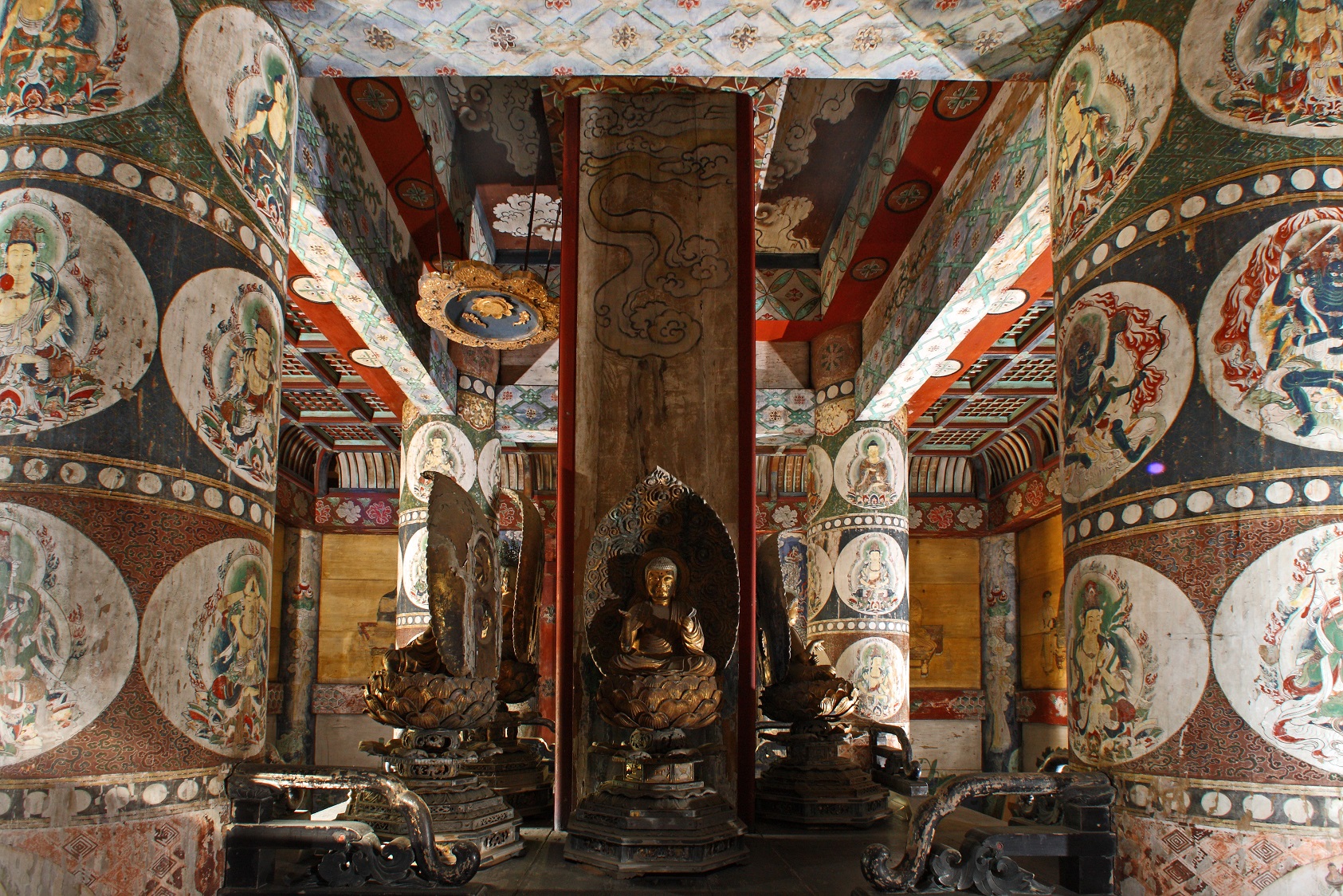
World Heritage Site
Ninna-ji is a temple with a long and distinguished history, with many generations of its abbots coming from the imperial family. The Kyōzō (Important Cultural Property) that will be made open to public during the Kyoto Winter Special Openings is a hall storing valuable sutras and includes an octagonal rotating kyōzō (a shelf for texts) and colorful murals.
Ninna-ji’s five-story pagoda (Important Cultural Property) is a slender and beautiful tower rising approximately thirty-five meters above the ground. Its interior is decorated by beautiful, vividly-colored Buddhist paintings, and five Buddhist statues are placed in its center.
| Dates | January 10th (Fri) – March 18th (Tue), 2025 |
| Hours | 10:00 – 16:00 (Admission until 15:30) from January to February, 10:00 – 16:30 (Admission until 16:00) in March |
| Admission Fee | Adults ¥ 1,000 Free for persons age 18 and below |
| Access | • From Kyoto Station or from the JR Sagano Line’s Enmachi Station, take City Bus No. 26 or JR Bus and get off at Omuro-Ninnaji. • From Kyoto Station, take the JR Sagano Line to Uzumasa Station, and take the Keifuku Line (Randen) from Satsueijo-mae Station to Omuro-Ninnaji Station. 3-minute walk from the station. |
9. Higashihongan-ji Temple, Miya-goten and Ōka-tei
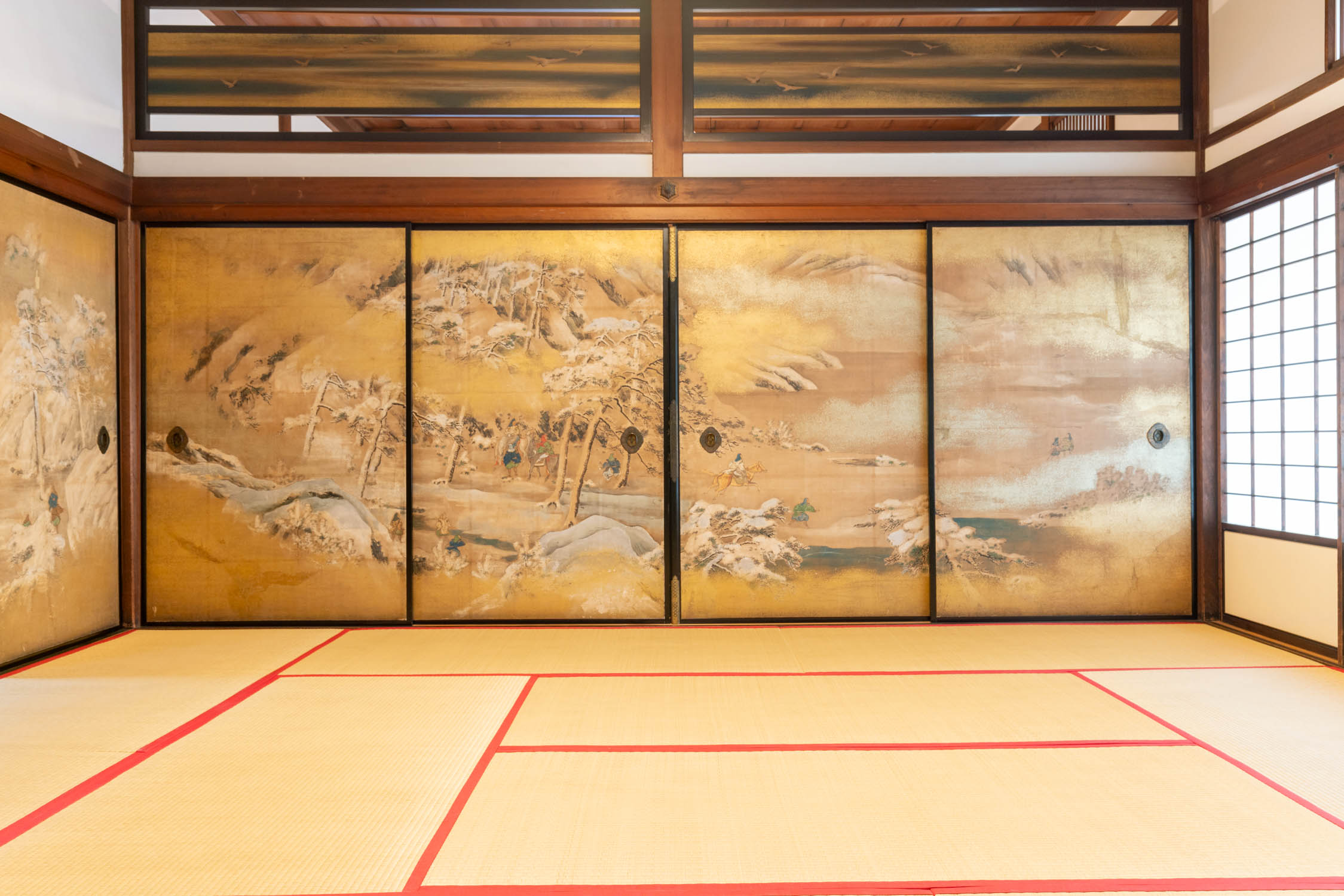
The Miya-goten (Important Cultural Property) is a palace building relocated from the Kyoto Gosho imperial palace and retains sliding door paintings depicting the various seasonal events that were held at the imperial court at the time. It also has a beautiful garden, which incorporates the sight of the largest hall of the temple, Goei-dō, making it appear as a mountain in the background of the garden.
Ōka-tei (Important Cultural Property) is built in sukiya-zukuri-style architecture which is often used for tea ceremony buildings. It houses paintings on the sliding doors by Maruyama Ōkyo, a painter who was active in the eighteenth century, depicting the auspicious trio of pine trees, ume (plum) trees, and bamboo.
| Dates | January 10th (Fri) – March 18th (Tue), 2025 |
| Hours | 10:00 – 16:00 (Admission until 15:30) from January to February, 10:00 – 16:30 (Admission until 16:00) in March. |
| Admission Fee | Adults ¥800 ・Age 6-12 ¥400 |
| Access | • Seven-minute walk from Kyoto Station. • From Kyoto Station, take the City Subway Karasuma Line to Gojo Station. 5-minute walk from the station. |
10. Tō-ji Temple, Five-Story Pagoda

World Heritage Site
Tōji’s five-story pagoda is the tallest wooden tower in Japan, rising approximately fifty-five meters above the ground. During the Kyoto Winter Special Openings, visitors can enter the first story of this pagoda, which is normally closed to the public.
Inside is a pillar extending all the way up to the fifth story, surrounded on four sides by Buddhist statues.
| Dates | January 10th (Fri) – March 18th (Tue), 2025 |
| Hours | 8:30 – 17:00 (Admission until 16:30) |
| Admission Fee | Adults ¥800・Age 16-18 ¥700・Age 6-15 ¥500 (fee includes general admission) |
| Access | • 15-minute walk from Kyoto Station. • From Kyoto Station, take City Bus No. 205 to Toji-michi. 5-minute walk from the bus stop. |
11. Daigo-ji Temple, Sanbō-in Temple
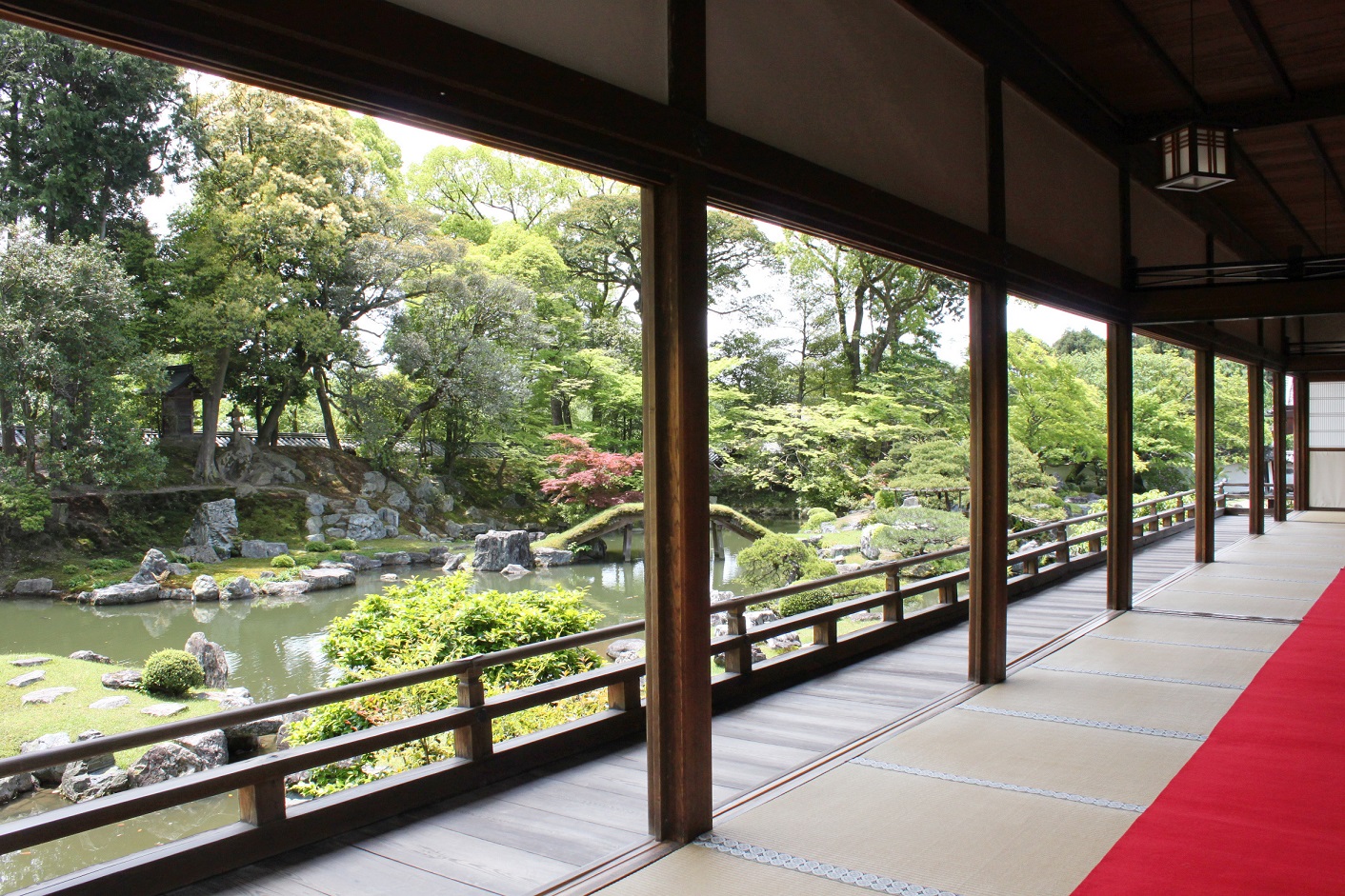
World Heritage Site
The National Treasure Omoteshoin building and its garden were designed for the famous cherry blossom viewing gatherings that were held by Toyotomi Hideyoshi (1537-1598), and the structure is recognized as a fine specimen of lavish Momoyama period (late sixteenth century) architecture.
During the Kyoto Winter Special Openings, the Miroku-Bosatsu (Maitreya Bodhisattva) (Important Cultural Property), a Buddhist statue with a beautiful face created by the famous Buddhist sculptor Kaikei, who was active in the twelfth century, as well as the Shōgetsu-tei tea room will be made open to public.
You can also view the famous golden tenmoku tea bowl, which was gifted by Hideyoshi.
| Dates | January 10th (Fri) – March 18th (Tue), 2025 |
| Hours | 9:00 – 16:30 (Admission until 16:00) from January to February, 9:00 – 17:00 (Admission until 16:30) in March. |
| Admission Fee | Adults ¥800 Free for persons age 6-12 *General admission fee for Sanbo-in (Age 6 and above ¥600) will be required in addition to this. |
| Access | • From JR Yamashina Station, take City Subway Tozai Line to Daigo Station, and exit from Exit No. 2. 10-minute walk from the station. • From Kyoto Station’s Hachijo Gate (in front of Hotel Keihan), take the Keihan Bus Kyoto Daigoji Line to Daigoji. |
Internet reservations will be prioritized for the following two sites.
*The reservation website is only available in Japanese language.
*Internet reservations will be prioritized. This means that there is a chance that those arriving at the receptions without reservation may not be able to enter.
*Visits to these sites will take the form of tours accompanied by Japanese-language guides. (English-language pamphlets are available.)
*Only one group will tour each site at a time.
12. Jisyo-ji (Ginkaku-ji) Temple, Hondo and Roseitei
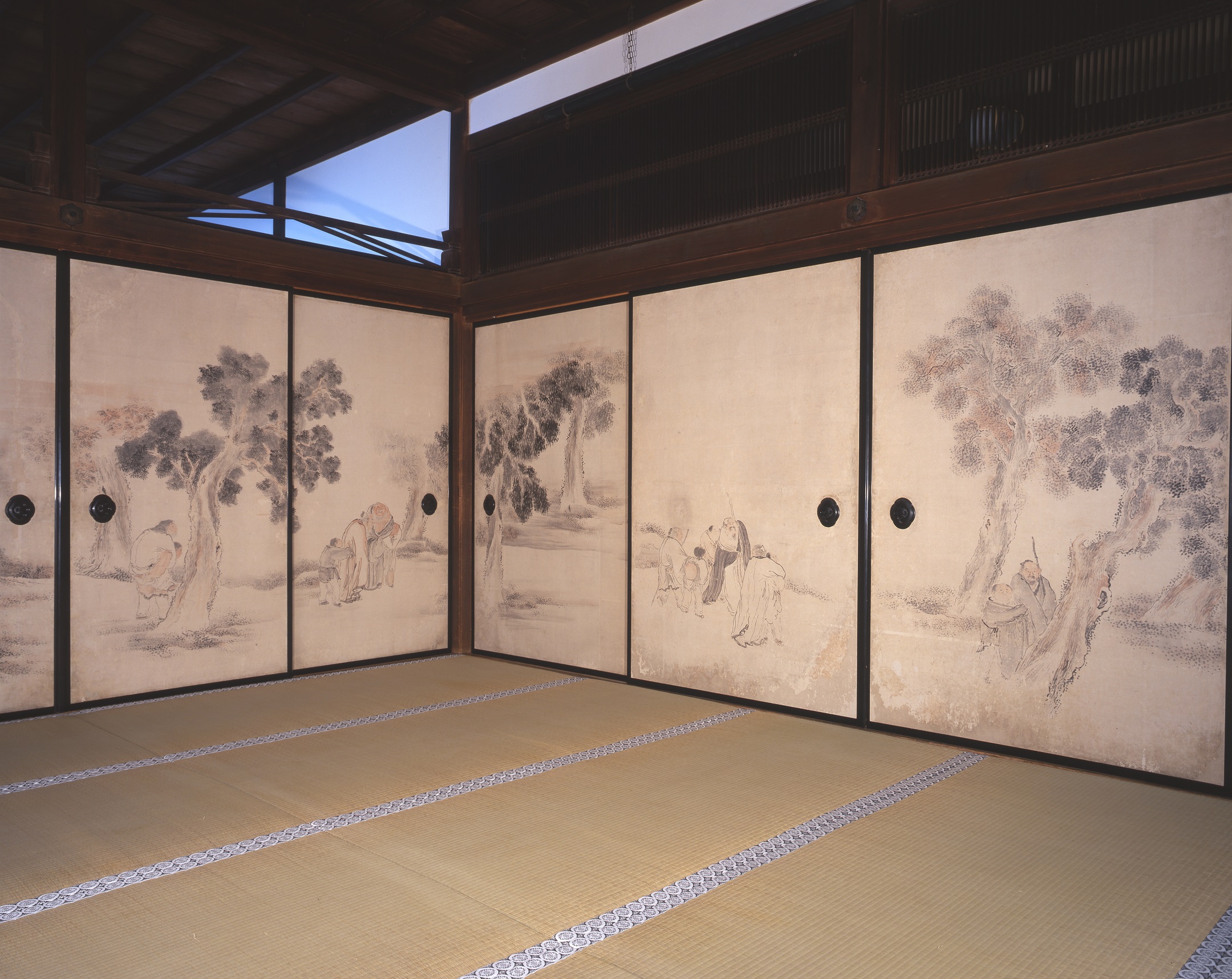
Photo courtesy of Jisyo-ji Temple (Ginkaku-ji Temple)
World Heritage Site
Jisyo-ji Temple is a Zen temple that started out in the end of the fifteenth century as a mountain villa belonging to Ashikaga Yoshimasa (1436-1490), the eighth shogun of the Muromachi Shogunate, and is widely known by the name Ginkaku-ji. The Ginkaku, or “the Silver Pavilion” (National Treasure), which is a simple yet elegant piece of architecture, and the temple’s beautiful garden will be open to public as usual. During the Special Openings, however, you will also be able to enter the temple’s Hondo (Main Hall), which was rebuilt in the Edo period, as well as Roseitei, which is a building where Yoshimasa enjoyed incenses and which has colorful paintings on the sliding doors by Okuda Gensō.
| Dates | February 8th (Sat) – March 18th (Tue), 2025 *Due to unforeseen circumstances, the event will not be held on March 17th (Mon) and 18th (Tue). |
| Hours | Online reservations will be prioritized. Six groups may tour the site daily, with time-slot starting times ranging from 10:00 to 15:30. |
| Admission Fee | Adults ¥800 ・Age 6-12 ¥400 *Regular admission fees for the Ginkaku and its surroundings (Adults¥500・Age 6-15 ¥300) will be required in addition to the above. |
| Access | • From Kyoto Station, take Kyoto City Bus No. 5 or No. 7 and get off at Ginkakuji-michi. It is a ten-minute walk from there. Alternatively, take Kyoto City Bus No. 105 (operates only on Saturdays, Sundays, and national holidays) and get off at Ginkakuji-mae. It is a seven-minute walk from there. |
| Internet reservations | https://select-type.com/rsv/?id=0KHmNVvvr10&c_id=366744 *Available in Japanese only |
13. Tenryū-ji Temple, Shōun-kaku and Kan'u-tei
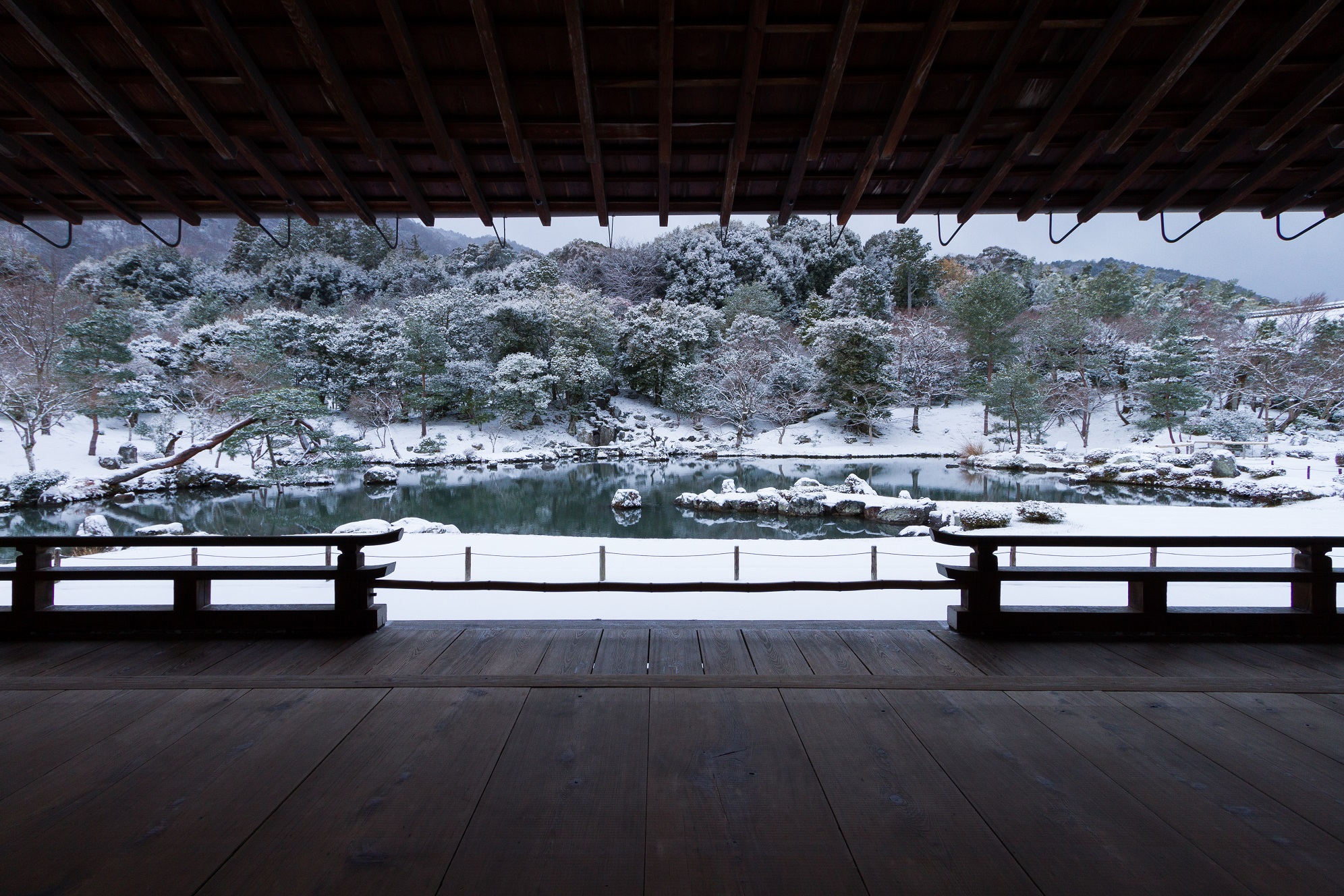
Photo courtesy of Tenryū-ji Temple
World Heritage Site
Tenryū-ji Temple is a large temple located in the Arashiyama area. Its Sōgenchi Garden, which received the first double designation as a Historic Site and a Special Place of Scenic Beauty by the Japanese government, was created about seven hundred years ago and retains its beauty of the time, with exquisite rock placements and a design incorporating the sights of the Arashiyama and Kameyama mountains into the background as “borrowed scenery.”
During the Kyoto Winter Special Openings, two of the temple’s tea rooms will be made open to the public for the first time.
| Dates | January 10th (Fri) – March 18th (Tue), 2025 *Closed to the public on January 15th (Wed) , February 1st (Sat)~3rd (Mon) , February 14th (Fri), February 15th (Sat), March 1st (Sat), and March 15th (Sat). |
| Hours | Online reservations will be prioritized. Nine groups may tour the site daily, with time-slot starting times ranging from 9:00 to 15:45. |
| Admission Fee | Age 6 and above ¥500 *Regular admission fees for the garden and the halls (Adults¥800・Age 6-15 ¥600) will be required in addition to the above. |
| Access | From Kyoto Station, take JR Sagano Line to Saga Arashiyama Station. It is a thirteen-minute walk from there |
| Internet reservations | https://select-type.com/rsv/?id=0KHmNVvvr10&c_id=366847 *Available in Japanese only |
